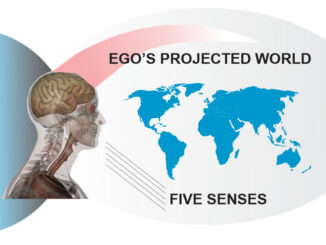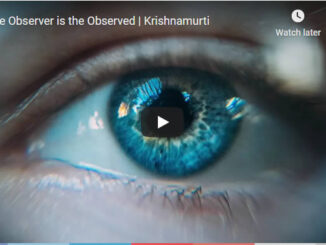
Arten’s Review
In Gary Renard’s excellent book ‘The Immortal Reality’ his extra-worldly visitor Arten asks him to review ‘The Hero of the Dream’ every two weeks for a total of five times.
The Hero of the Dream
1. The body is the central figure in the dreaming of the world. ²There is no dream without it, nor does it exist without the dream in which it acts as if it were a person to be seen and be believed. ³It takes the central place in every dream, which tells the story of how it was made by other bodies, born into the world outside the body, lives a little while and dies, to be united in the dust with other bodies dying like itself. ⁴In the brief time allotted it to live, it seeks for other bodies as its friends and enemies. ⁵Its safety is its main concern. ⁶Its comfort is its guiding rule. ⁷It tries to look for pleasure, and avoid the things that would be hurtful. ⁸Above all, it tries to teach itself its pains and joys are different and can be told apart.
2. The dreaming of the world takes many forms, because the body seeks in many ways to prove it is autonomous and real. ²It puts things on itself that it has bought with little metal discs or paper strips the world proclaims as valuable and real. ³It works to get them, doing senseless things, and tosses them away for senseless things it does not need and does not even want. ⁴It hires other bodies, that they may protect it and collect more senseless things that it can call its own. ⁵It looks about for special bodies that can share its dream. ⁶Sometimes it dreams it is a conqueror of bodies weaker than itself. ⁷But in some phases of the dream, it is the slave of bodies that would hurt and torture it.
3. The body’s serial adventures, from the time of birth to dying are the theme of every dream the world has ever had. ²The “hero” of this dream will never change, nor will its purpose. ³Though the dream itself takes many forms, and seems to show a great variety of places and events wherein its “hero” finds itself, the dream has but one purpose, taught in many ways. ⁴This single lesson does it try to teach again, and still again, and yet once more; that it is cause and not effect. ⁵And you are its effect, and cannot be its cause.
4. Thus are you not the dreamer, but the dream. ²And so you wander idly in and out of places and events that it contrives. ³That this is all the body does is true, for it is but a figure in a dream. ⁴But who reacts to figures in a dream unless he sees them as if they were real? ⁵The instant that he sees them as they are they have no more effects on him, because he understands he gave them their effects by causing them and making them seem real.




